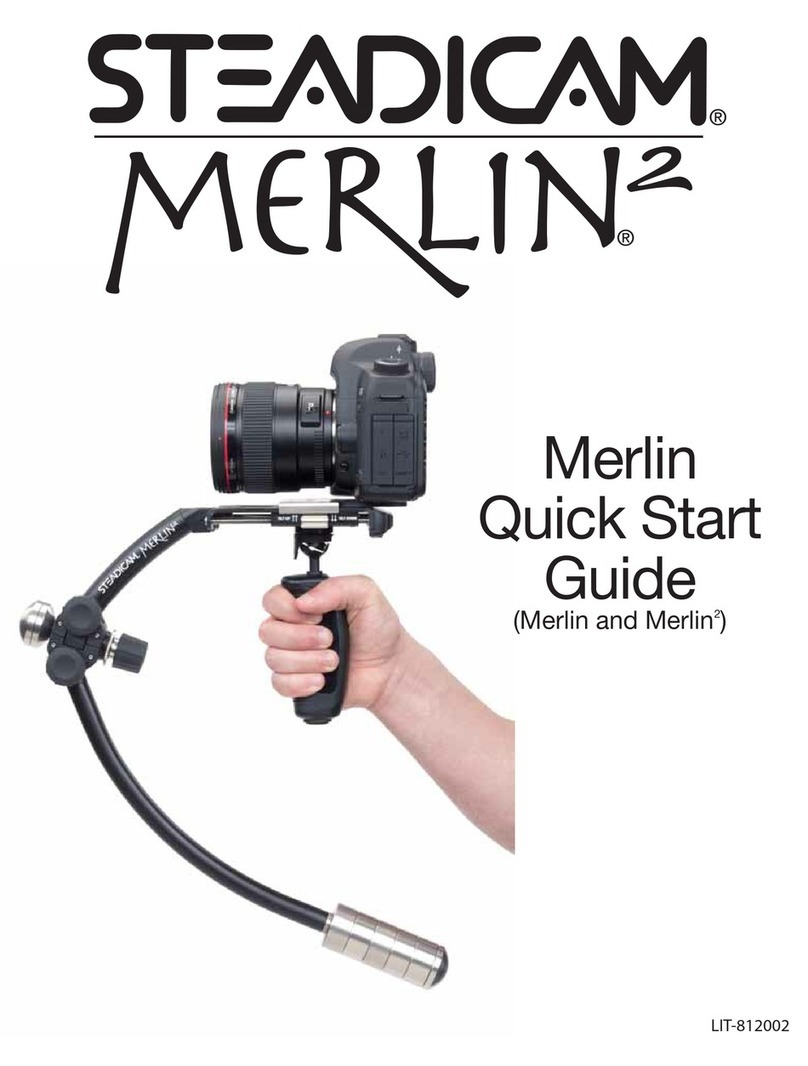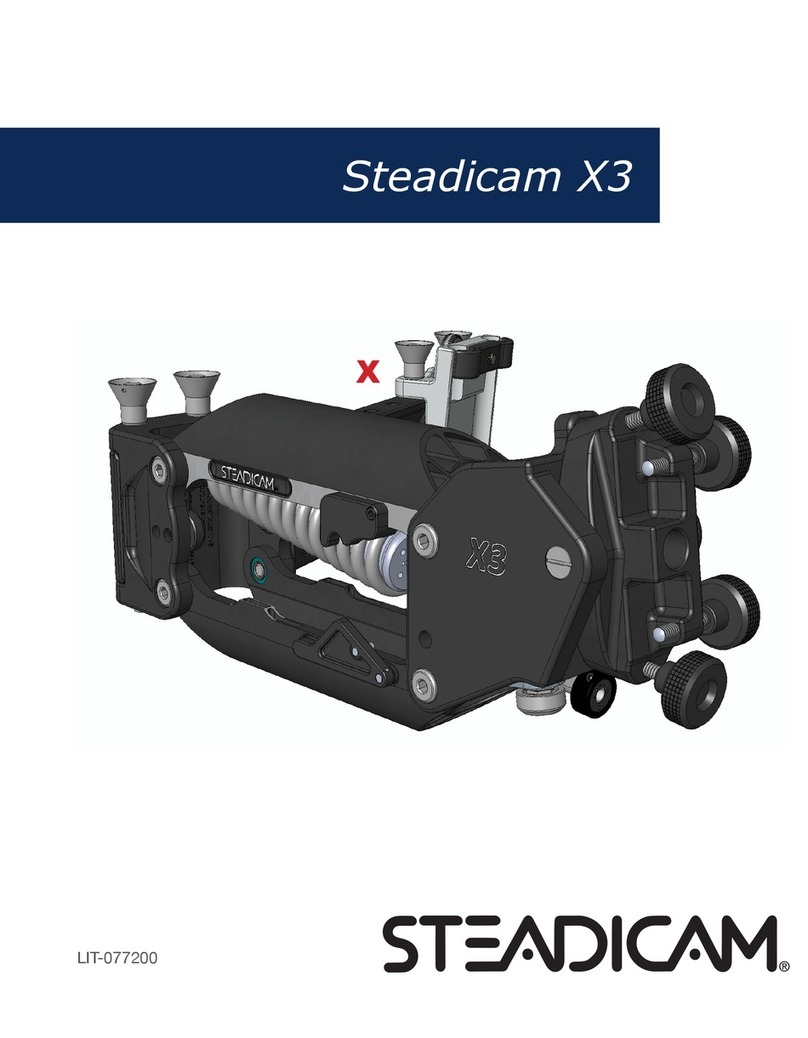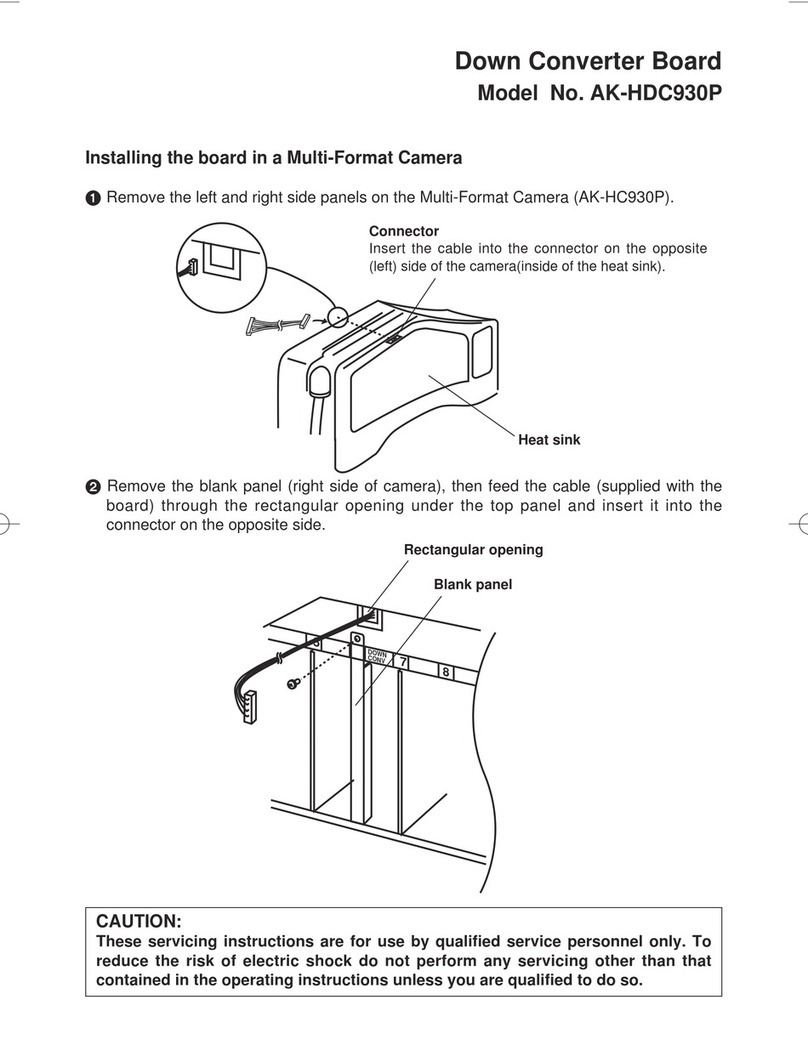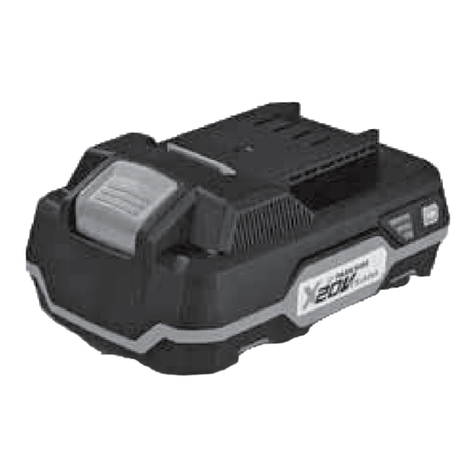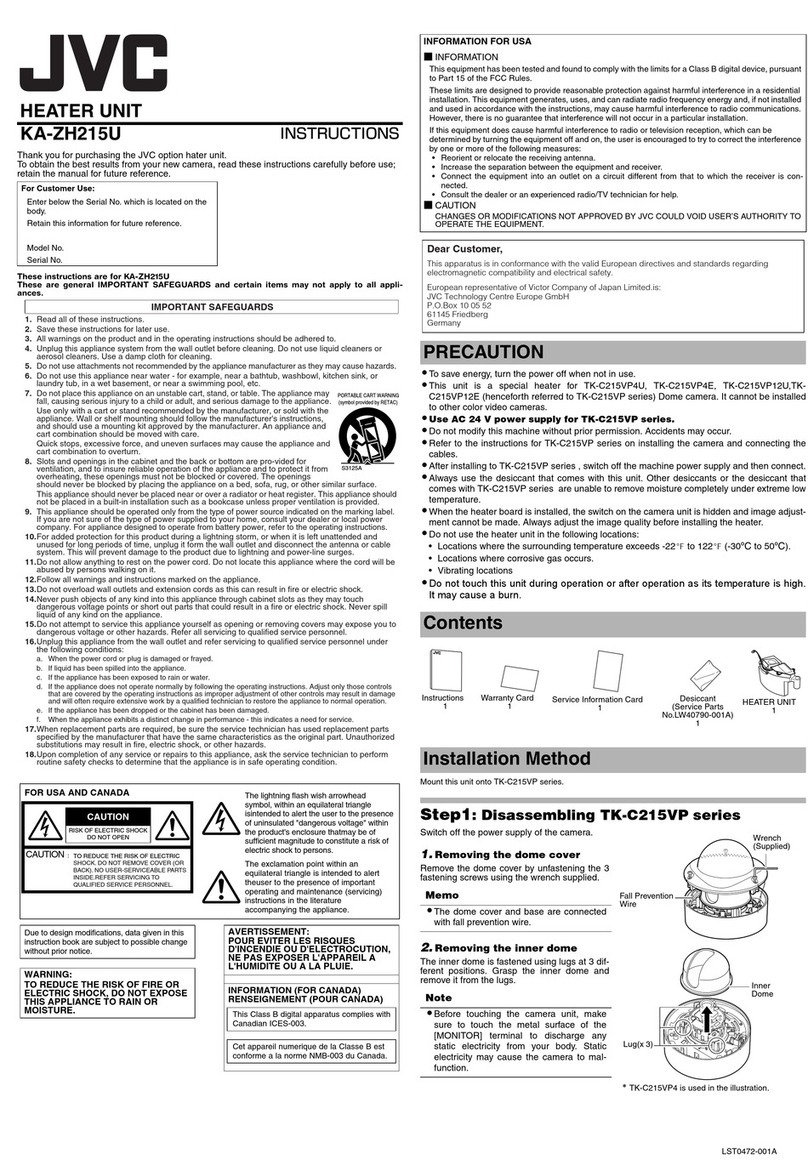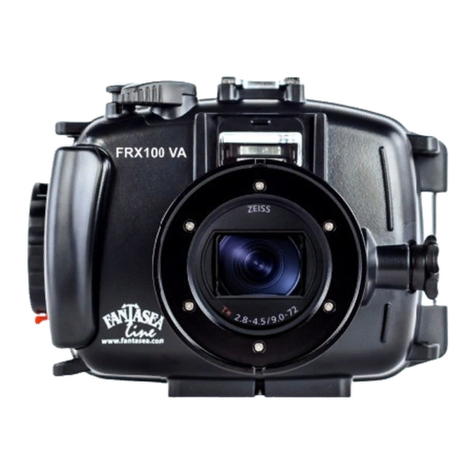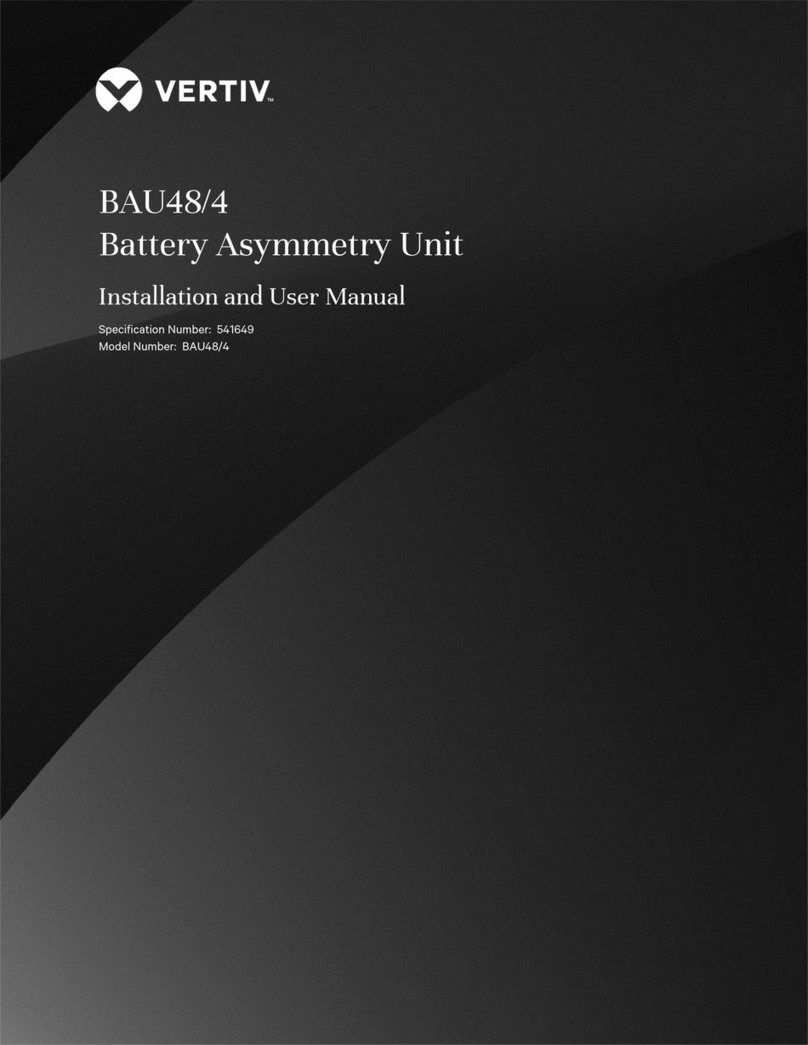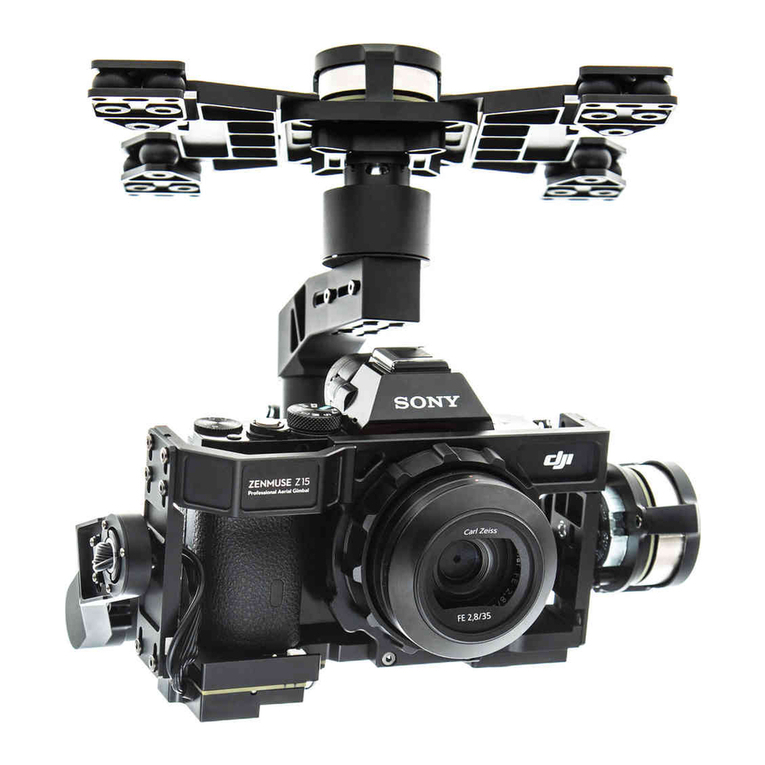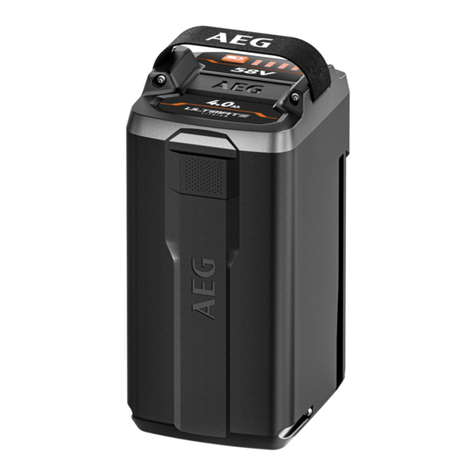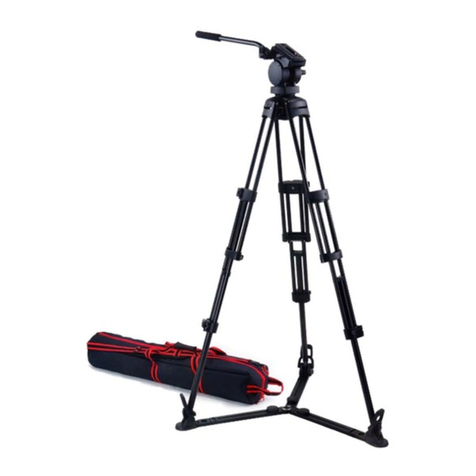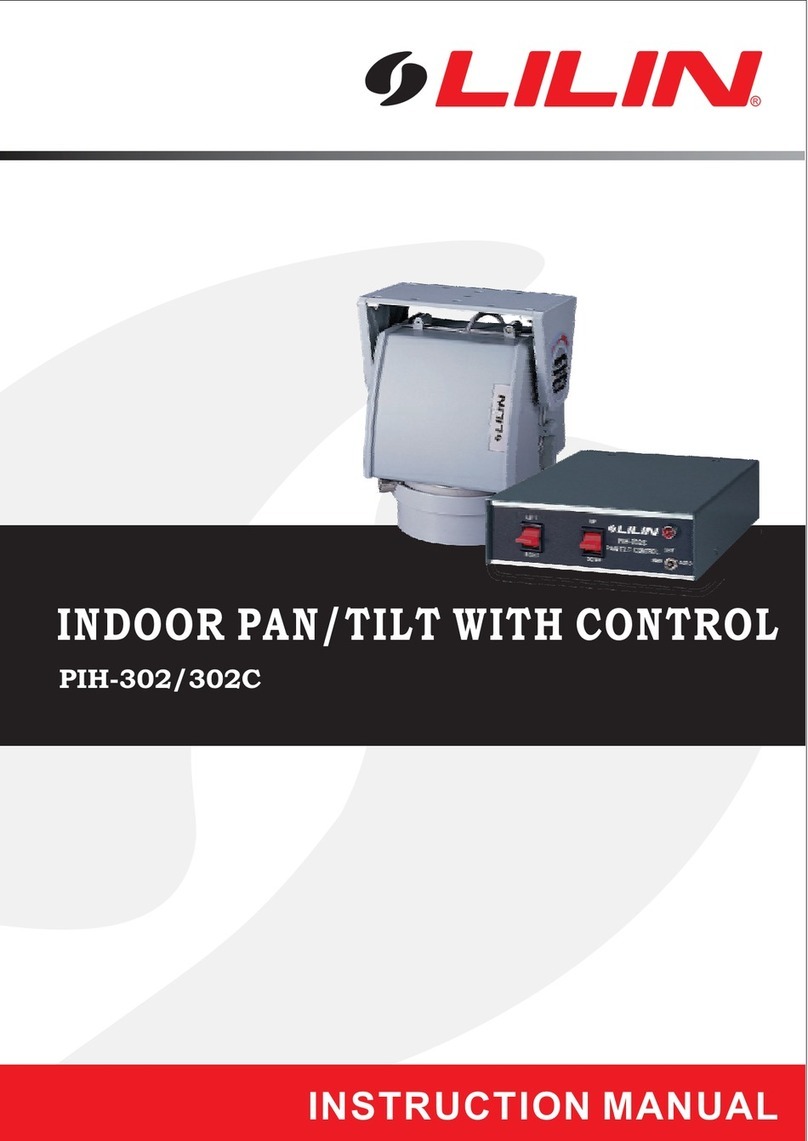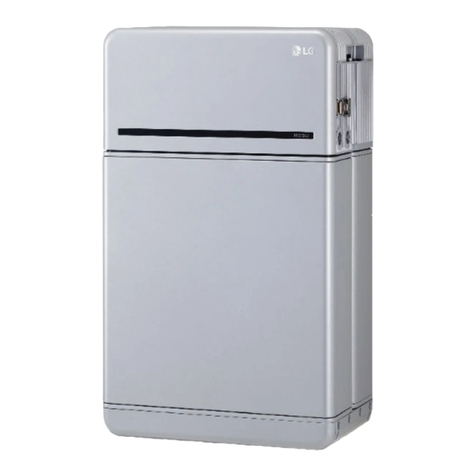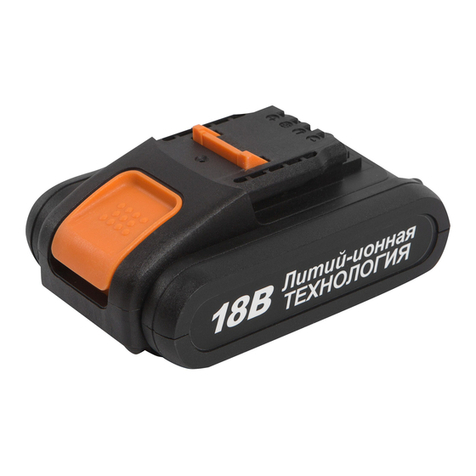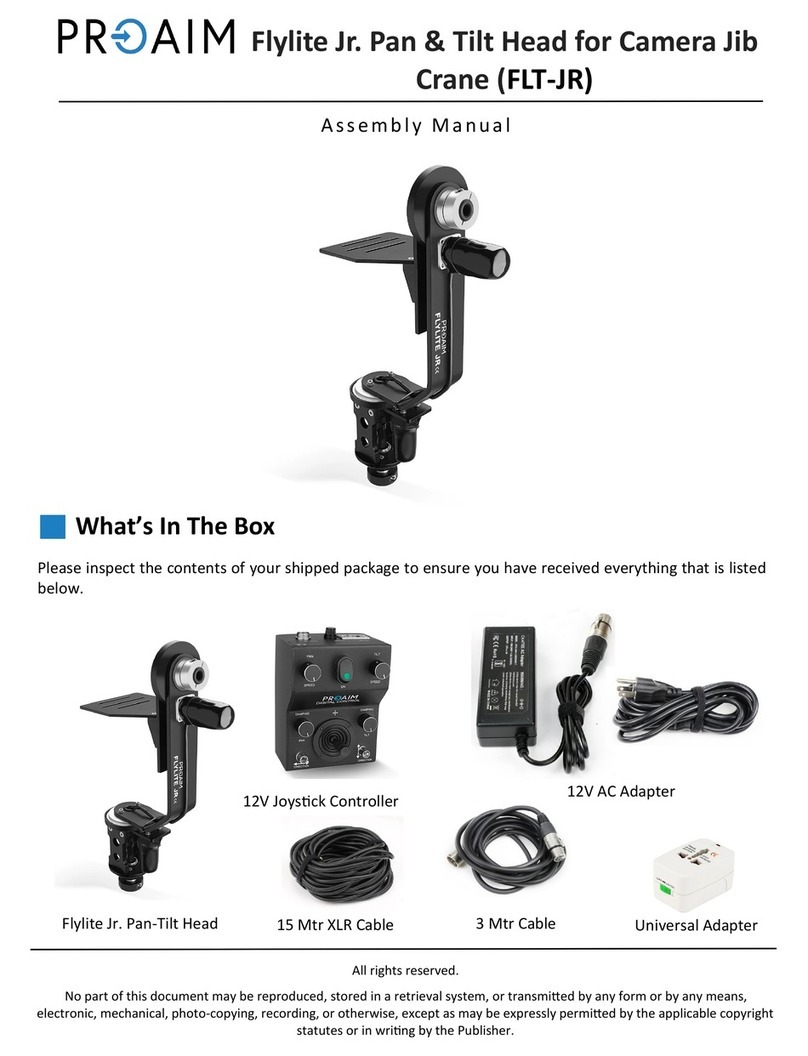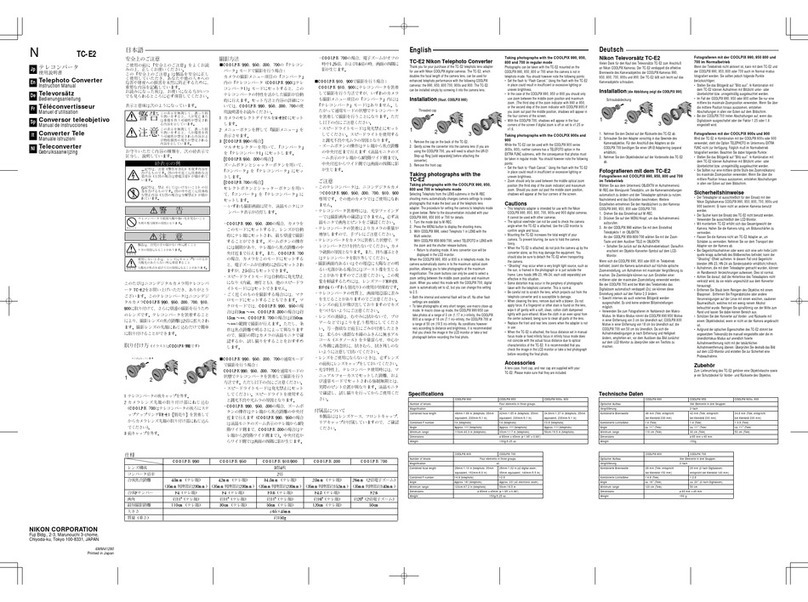Steadicam G-70x Arm User manual

p/n LIT-257010-J
G-70x™Arm: Ultra2®/Shadow™stabilizers

2
The G-70x™Arm
The G-70x™arm has a total lifting capacity of 12 to 70 pounds and a 29” boom range.
The arm also incorporates a ride control, a quick post change mechanism, an arm post
drag control, and a kickback link.
Titanium
springs
Adjustment
knobs
Kick-back link
Arm post release lever
G-70x™Arm
Arm post drag
control
Arm post
Double action hinge
Rod ends
Socket
Titanium
springs
Socket quick
release pin
Weight adjustment
knob, aka “lift”
Upper arm section
Adjustment
knobs
Forearm section
Isoelastic adjustment
screw, aka “ride”

3
The G-70x™arm socket is
inserted into the socket block
on the vest.
Adjusting the arm lift angle
Setting your threads is part of basic
operating technique. Two adjustment
screws in the socket block on the vest
and two “rod ends” in the mating section
of the arm determine the angle of lift of
the arm. These two adjustments are your
“threads.” They are personal and critical
for good operating.
Some combination of adjustment of
these screws – and your physique and
posture – will make the arm lift straight
up when carrying the sled. The angles
of adjustment are not directly “in-out”
and “side to side,” but rotated about
30 degrees clockwise (relative to the
operator). We can suggest approximate
threads to start, but the only way to test
your threads is to pick up the sled and see
what happens.
Side to side
For almost all operators, regardless of
body type, the typical adjustment for the
“side to side” screws (the rod ends in
the arm) is 2 to 2.5 turns out on the top
screw and ALWAYS all the way in on the
bottom screw.
The two side to side screws work
independently of one another. Do not
tighten the lower screw, but be sure it is
all the way in, and then back it out 1/8th
of a turn to prevent binding.
In and out
Looking down at the top “in-and-out”
screw. Count the threads indicated by the
arrow. This is a typical adjustment for a
person in reasonable shape.
The “in-out” adjustment on the socket
block varies greatly by the operator’s
body type. If you have big pectorals and
a at stomach, the top screw is almost
all the way in. If you’ve been eating well
and exercising less, the top screw will be
further out.
Always dial in the top screw rst to your
setting, then turn in the bottom screw
until it just snugs up against the tting.
There is no need to tighten the bottom
screw very hard.
With both pairs of screws properly
adjusted, the camera will oat in all
positions with the operator standing
relatively comfortably.
On the arm, pull the “parachute pin,”
ip the mating block, and reinsert the
parachute pin with the kick back link
rotated (see page 6). Note that the mating
block is now reversed; the upper side to
side adjusting screw is now the lower
screw and vice versa.
To set your threads, rst dial the lower
side to side screw all the way in, then
adjust the upper screw to your threads
- about 2 to 2.5 turns out. Use the same
procedure to change back to left side
operating.
count
threads
here
Goofy foot
If you want to operate “goofy-foot,” —
with the sled on the right side –you will
need to reverse the socket block.
On the vest, loosen the socket block
height adjustment screws. You may have
to tap the plate hard with your st to get
everything to release. Flip the plate and
retighten the clamp. Be sure the dovetail
clamp properly mates with the beveled
retainer.
Use a 1/4” allen to adjust the “side to
side” screws. When wearing the rig, be
sure to hold the centerpost in line with
the “in-out” thumbscrews. This will take
the loading off the side to side screws.

4
Basic adjustments: Ride and Lift
Adjustment of Ride
Ride is a new feature and it takes a few
minutes to understand how it works,
and how to make it work for you. In the
eld, it only takes a few seconds to get
the exact performance you want from the
G-70x™arm.
Adjusting the ride: the arm must be
angled up at the top of its range.
Note: the ride knob is horizontal, the
lift knob is vertical.
If you can, preset Ride close to the
desired level of iso-elasticity in both arm
sections before picking up the sled and
adjusting Lift.
Start by presetting the Ride knob to the
middle of its travel (about 20 threads
visible). Once you get the iso-elastic feel
you like, make a note of the threads and
the camera weight for future reference.
Ride can only be adjusted when the arm
segment is raised to its highest, unloaded
position, so it is easiest to adjust before
you pick up the sled. It can also be
adjusted when ying the sled by booming
up fully.
The G-7x0™arm becomes progressively
less iso-elastic as the arm’s lift is
increased. Heavier loads will require a
counterclockwise adjustment of the Ride
knob to obtain – or maintain – the desired
iso-elasticity. Lighter loads will require a
clockwise adjustment of the Ride knob to
decrease iso-elasticity.
Turning the Ride knob also has a slight
effect on the lifting power of the arm. So
preset the Ride as best you can and then
adjust the arm’s lift.
The stops at both ends of travel of the
Ride knob should not be forced.
Each arm segment has two adjusting
knobs:
The Ride knob alters iso-elasticity from a
hard ride to an ultra-effortless iso-elastic
ride — just shy of locking up at top and
bottom.
The Lift knob dials lifting power
continuously from 12 lbs to 70 lbs.
G-70x™Arm
Ride and Lift

5
Adjustment of Lift:
All lift adjustments must be done while
wearing the rig, so pick up the sled.
Stand in the classic Missionary position
and properly set your threads before
proceeding.
Adjust the “forearm” section rst (the
arm section closest to the gimbal).
Hold the arm segment slightly above
level. When the coaxial springs
are perpendicular to the adjusting
mechanism, the spring force is neutral
— neither up nor down — reducing the
effort needed to turn the knob.
When the forearm section is set correctly,
adjust the upper arm section to follow
(track with) the upper arm section as you
boom fully up and down. Do not worry if
the arm tends to lock up or down at this
point.
Re-adjust the Ride knob
for the desired iso-elastic
response
With the arm set to carry the load, you
can micro-adjust Ride for any given load.
In general, most operators will want the
most iso-elastic possible ride. To adjust
the arm for maximum iso-elasticity
at any given lift, turn the ride knob
counterclockwise until the arm section
begins to “lock” up or down at the
extremes of travel. Then turn the ride
knob clockwise a couple of turns. This
will keep the arm from locking up or
down. Test and micro-adjust the lift and
ride knobs as necessary.
Typically, the arm is very forgiving of
less than “perfect” adjustments of lift
and ride. Some operators will set the arm
sections at a higher nominal angle (+20º
or more), to minimize any lifting required
with heavier cameras and/or high boom
heights. Pushing down is easier than
lifting fully with the extended boom
range possible with the G-70x™arm.
The arm can also be adjusted to hang
lower than normally for shots with low
boom heights, with very little penalty
in performance. Minor changes in sled
weight (+/- several lbs/kg) do not require
adjustment of the ride knob.
Some operators prefer a more centered
ride (like a IIIA arm with a less than
maximum load), or a more centered ride
when hard-mounted on rough terrain.
Experiment and use the arm the way you
like it.
Slightly raise or lower the arm segment
to nd the sweet spot. Adjust the arm’s
lifting power so that the arm section
seeks a position slightly above horizontal.
Note that the Lift knob has
a range of adjustment of 32
turns. This means that each
turn of the Lift knob will add
or subtract about 1.5 lbs
(.68kg) of lift.
Some adjustment tips:
When adjusting from a light load to a
heavy load: It helps to have an assistant
independently control the height of the
upper arm and make his lift adjustment at
the same time as you adjust the forearm
lift.
It also helps if you raise your docking
stand so you can stand next to it and
insert the arm post into the gimbal yoke
of your docked sled with your heavy
camera aboard. As you and your assistant
adjust the lift of both arm segments, they
will gradually pick up the weight until it
oats free of the dock.
When adjusting from a heavy load to a
light load: Leave the heavy load aboard if
possible, and with the sled on the stand,
remain adjacent to the stand while you
lighten the lift of both arm sections at
the same time. Then remove the heavy
weight and rebalance the sled for the
light camera and then see if the lift needs
further adjustment.
Lift can be altered by forcefully
holding the arm segments
at the correct angle while
adjusting, but be prepared for
some exertion! You might be
shocked how energetic the
springs feel if you are raising
or lowering the lift by 30 lbs
(14kg)!

6
The G-70x™arm “kick back” connector
Regular
G-70x™Arm
“Kick Back”
To accommodate both regular and goofy-foot operators, the two mating parts held by
the “parachute” pin can t together in two ways. The design intent is to “kick back”
the upper arm segment as shown in the photos. When “kicked-back,” the arm moves
further out of the way while operating with the sled more in front of you or to the
arm mounting side. The parts need to be set one way for regular operating, and the
opposite way for goofy foot operating.
Goofy-foot

7
Operators with “back mounted” vests should also orient the connection to
send the arm to the inside.
With a back mounted vest
When using a back mounted vest, set the
kickback link inwards as shown in the
photo. This is the opposite direction from
the kickback link’s use in a front mounted
vest. The idea is to get the socket block
both closer to the body and to the sled.
Why? See the next tip.
When using any back mounted vest, all
arms are more extended from the load
(the sled) to the attachment point (the
socket block). Additionally, the “end
block” nearest the body is pointing fore-
aft. With a normal, front-mounted vest,
the arm extension is less and the end
block is oriented sideways to the load.
Extending any arm makes it more likely
to go over centers and lock up.
When you lean back with a back mounted
vest, the upper arm section’s end block
leans back in line with the upper arm
section. (With a front mount vest, the end
block rotates perpendicular to the upper
arm section as you lean back). With a
back mounted vest, this leaning back
puts the end block in a more iso-elastic
If you leave the forearm fully iso, it
has the “helper torque” throughout its
range, low to high, and when the arm is
extended, it tends to force the upper arm
over centers. Consequently, you should
not only reduce the iso for the upper arm
link with a back mounted vest, but also
reduce the iso for the forearm. That way
when raised, the operator is lifting a little,
the torque is reduced correspondingly and
the transferred torque is likewise reduced
– hence a smaller tendency for the upper
arm section to go over centers. Even with
the iso dialed down, the G-70x™arm’s
response in the +/- 50 degree range is
more iso-elastic than other arms.
position, making the upper arm section
more likely to go over centers and lock
up.
All arms behave this way, but the
consequences become evident with an
extended range (+/- 70 degree) and very
iso-elastic arm like the G-70x™arm or
G-50x™arm. The travel in most other
arms is restricted to +/-50 degrees, and
this effect occurs above that angle.
The solution is to have about one-half the
“iso” help (1/2 the threads) in the upper
arm section that one has in the forearm
section. You ne tune the adjustment
the same way as described on page 5,
increasing the iso-elastic response until
the arm starts to lock up, then dialing it
back in a few turns.
Walking with a back mounted vest also
“activates” the socket block more than
with a front mounted vest; it rocks back
and forth in line with the upper arm
section, again with consequences for the
arm’s response. It may require an even
smaller “less iso” link.
Tip: Many operators with
front mount vests have
removed the stopper for
the socket block spring. If
you do this, also change
the kickback link to the
forward position (like the
back mount photo). It’s
a bit harder to insert the
arm into the socket block,
but the range of motion is
increased.

8
Working with arm posts
G-70x™Arm Posts
Changing arm posts
To change posts, rotate the mechanism to expose the release lever. Raise the lever to
horizontal to unlock the post. Note: the mechanism will remain in place. Replace post
with desired length post, leaving at least 1.125in (29mm) protruding above the arm.
Clamp by rotating lever back to vertical.
The quickest way to increase lens
height is to use a longer post in the
arm and to raise the socket block on
the vest. This increase in gimbal height
(and therefore lens height) - up to 11.5in
(29cm) - puts the gimbal about as high
as one can comfortably reach with the
operating hand. A longer arm post could
be used, but one can’t reach the gimbal
and do the most precise work.
Be aware that using a long arm post
can exert enormous torque on the arm
bearings and bones. The heavier the
camera is, the shorter the arm post
should be. If you want a very high or
low lens height, get a light camera!!
Remember, a long arm post alters the
height of all the components equally,
which may make viewing the monitor
more difcult or annoying. Check to see
what works; every situation is a little
different. The ability to quickly change
arm posts or to adjust the height of the
socket block on the vest, and/or to extend
the sled components, (all without tools!)
gives the operator many choices to
achieve a given range of lens heights and
viewing options.
Rotational drag
To set the rotational drag, turn the drag
knob clockwise to increase drag and
counterclockwise to decrease drag.
Changing a post does not affect the drag
setting.
General uses
In general, use the shortest possible post
in the arm. This avoids possible clearance
problems below the arm.
drag
knob
The Tiffen Company, 90 Oser Avenue, Hauppauge, NY 11788
631-273-2500•1-800-645-2522•www.tiffen.com
Tiffen Steadicam Operations, 2815WinonaAvenue,Burbank,CA91504
Phone:818-843-4600•818-843-8321
© The Tiffen Company, LLC, manual version 7/1/2010
Table of contents
Other Steadicam Camera Accessories manuals

Steadicam
Steadicam G-70x User manual
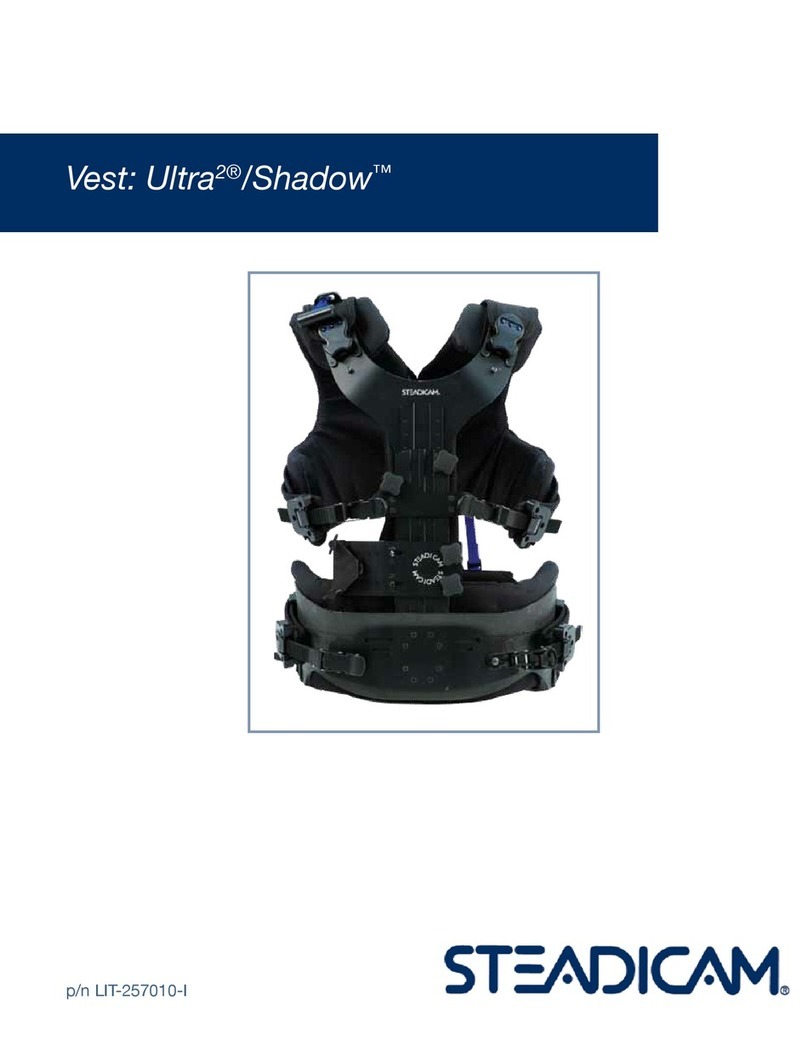
Steadicam
Steadicam Ultra2 User manual
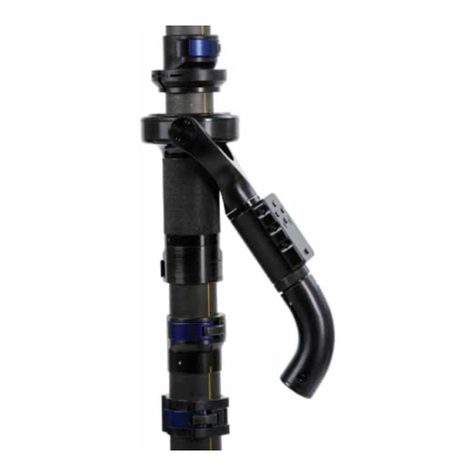
Steadicam
Steadicam Ultra2 User manual
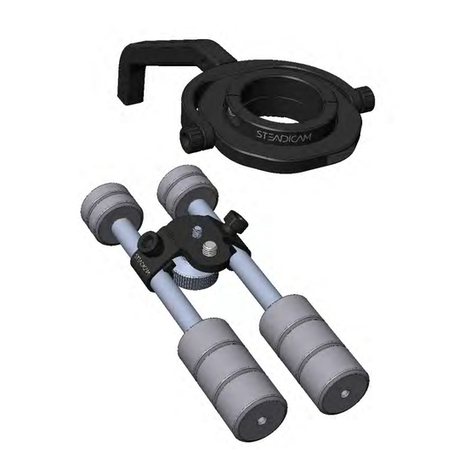
Steadicam
Steadicam Steadimate-S User manual
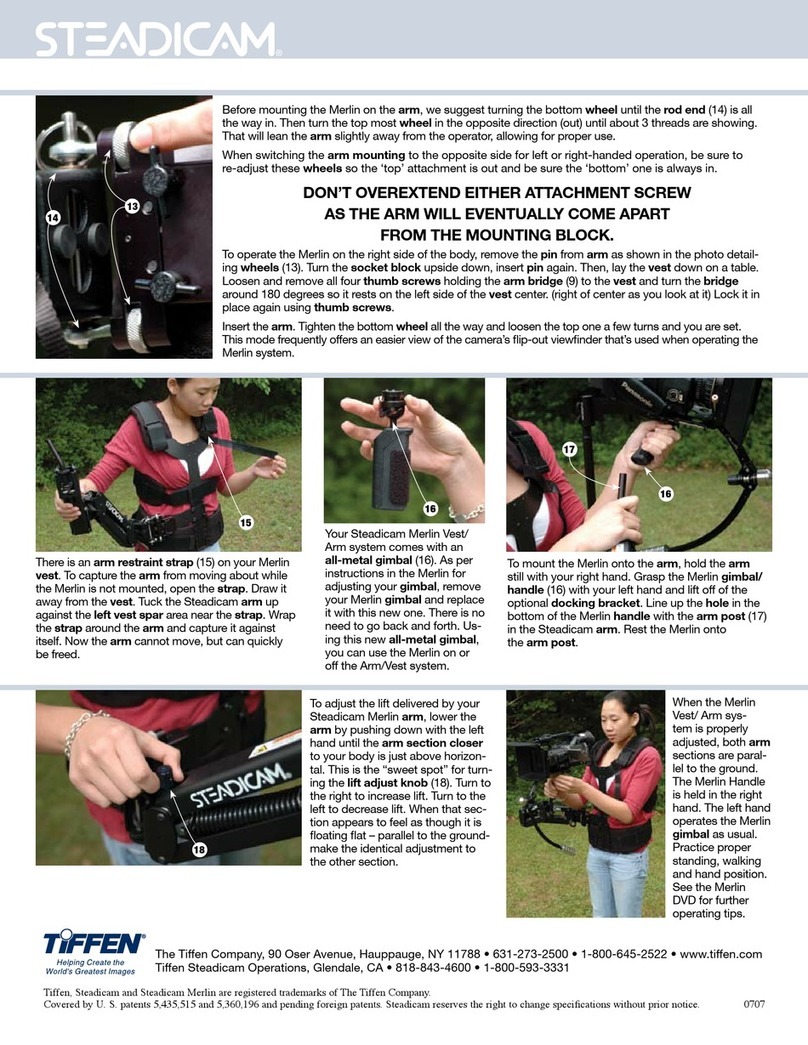
Steadicam
Steadicam Merlin Arm & Vest Technical manual

Steadicam
Steadicam ARCHER2 User manual
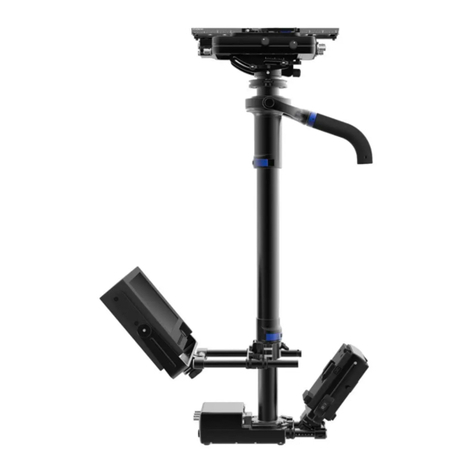
Steadicam
Steadicam M-1 User manual
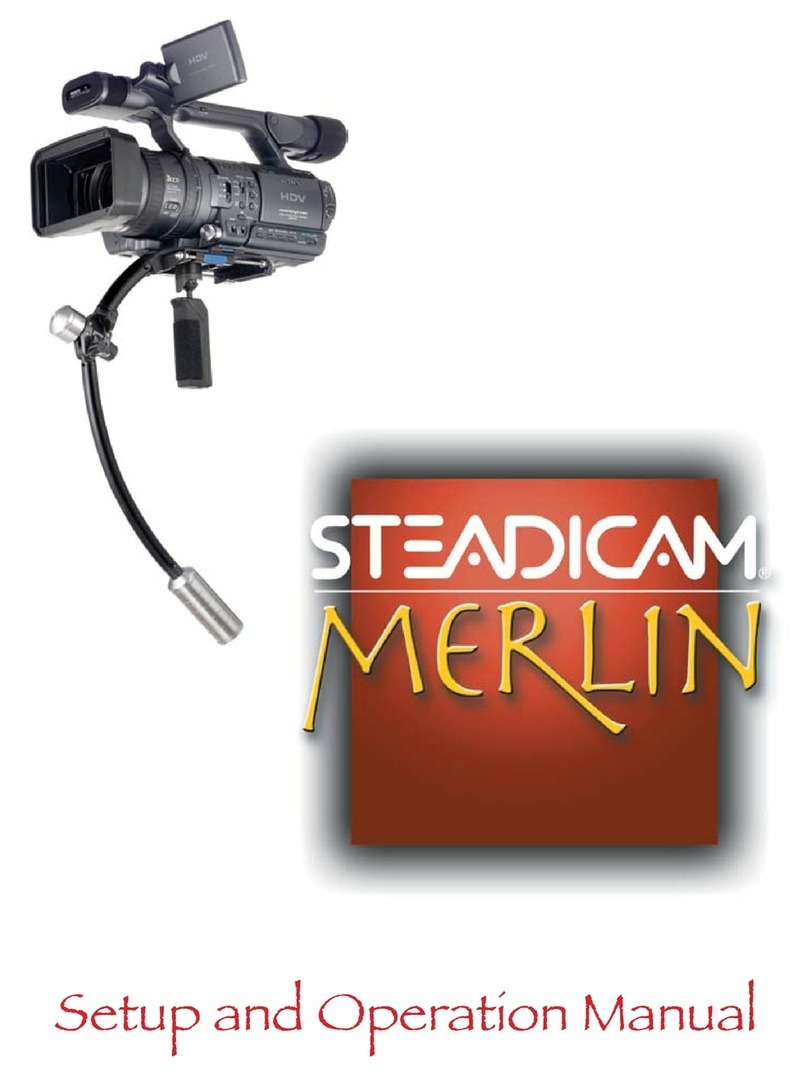
Steadicam
Steadicam Merlin Manual instruction
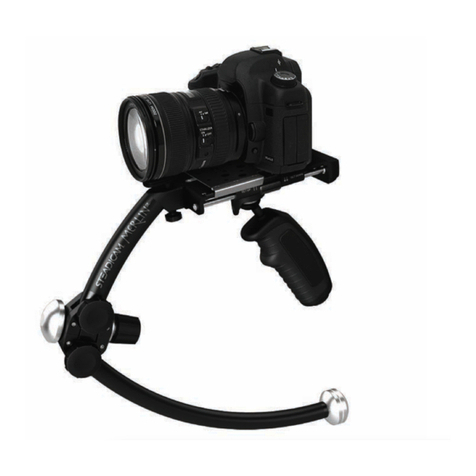
Steadicam
Steadicam Merlin 2 Manual instruction
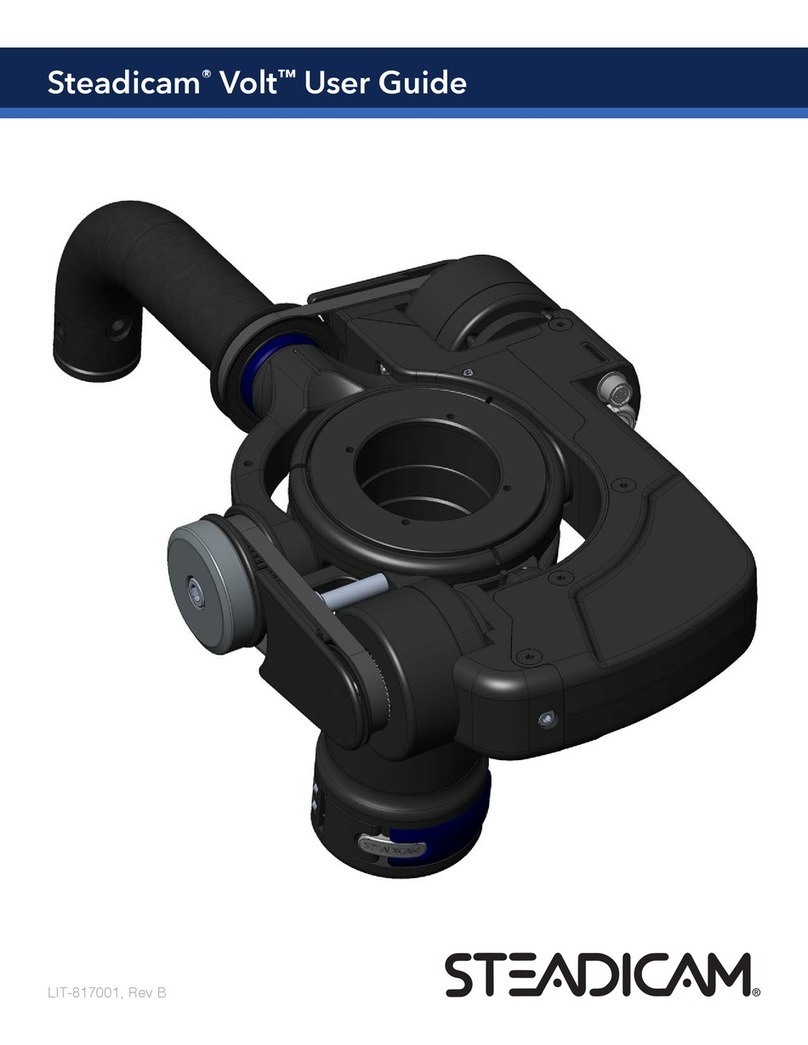
Steadicam
Steadicam Volt User manual
